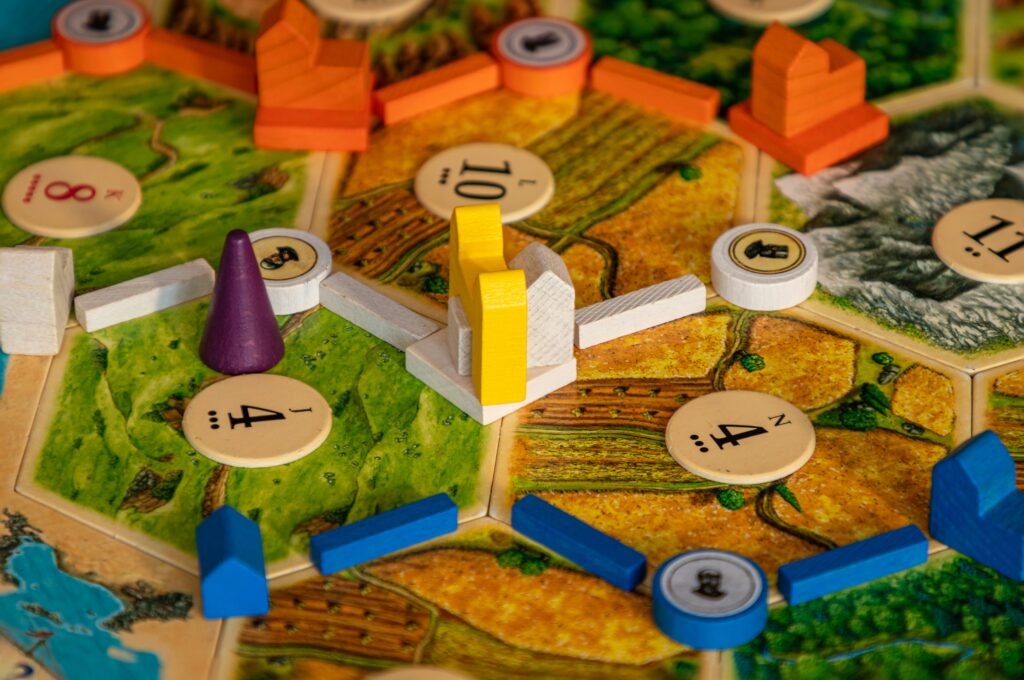Vlogging didn’t just survive the last few years of digital chaos — it adapted. Hard. Across ad-pocalypse cycles, changing algorithms, and platform burnout, creators kept building. They found new formats, rotated between platforms, and didn’t wait around for perfect conditions. Flexibility became the survival skill. And it’s paid off. In 2024, vlogging is more relevant than ever, but the rules keep evolving.
Now, short-form isn’t just for trends — it’s for storytelling. Algorithms are shifting. AI is creeping into the toolkit. Niches are getting narrower, and that’s not a bad thing. The audience expects tighter connections, smarter content, and faster delivery. For creators, this moment is about sharpening strategy. What you post, how often, and why it matters are no longer side notes. It’s the difference between growth and ghosting.
Staying in the game means staying aware. The ones who learn fast and adapt with intent will keep their edge.
What keeps players coming back isn’t randomness, it’s design. People are motivated by three things: the pursuit of mastery, the thrill of curiosity, and the promise of a clear payoff. When a game—or a vlog—taps into even one of these, it builds momentum. Hit more than one? You’ve got loyalty.
The secret sauce is flow. That state where challenge meets skill, and time disappears. If things are too easy, people bail. Too hard, same outcome. But get it just right, where the next win feels within reach but still earned, and users stick around. Vlogging is learning to mimic this. When content lands in that flow zone—structured but not stiff, surprising but not chaotic—audiences lean in.
Creators are also getting sharper at identifying who they’re talking to. You’re either aiming for Sunday-scrolling casuals or diehard niche loyalists. Each group wants different things: casuals want quick hits of relevance and clarity. Hardcores? They want depth, context, and a sense that the creator really gets their world. Knowing the difference changes everything, from how a video is titled to how long it runs.
Challenge in games is a balancing act. When it’s right, players stay hooked. When it’s off, they quit. The key is knowing the line between difficulty and frustration. Difficulty pushes players—frustration punishes them. One teaches, the other blocks progress.
A well-designed game introduces mechanics bit by bit. First, a low-stakes scenario to learn the ropes. Then, gradually sharper tests that demand mastery without feeling cheap. This kind of skill ramp builds confidence and keeps players engaged.
Feedback loops seal the deal. Visual cues, responsive controls, meaningful rewards—even a small upgrade or a satisfying sound—signal that progress is happening. These moments tell the player, “You’re getting better. Keep going.”
Difficulty isn’t just about making things hard. It’s about making them matter. When done right, it pulls players deeper into the world. They’re not just reacting; they’re improving, adapting, and staying fully immersed.
The best vlogs in 2024 aren’t just pretty edits. They give viewers a sense of real choice and human connection. That might sound lofty, but it’s actually simple: creators are designing their content to offer agency. Think pick-your-path storytelling, polls that shape the next video, or comments that drive the narrative forward. The viewer isn’t just consuming—they’re participating.
Still, this isn’t a video game. Humor, rhythm, and visual style serve as pressure release valves. When topics get dense or emotional, a quick laugh or an artful transition resets the vibe. These elements aren’t just decoration—they’re what keep people watching.
And then there’s surprise. Repetition fatigue is real, especially in daily vlogs. To keep it fresh, top creators throw in the unexpected. A setting change. A jarring cut. A twist in the story. Novelty beats predictability every time, and viewers come back for the uncertainty as much as the content.
Some games get it so right that they change the trajectory of the industry. Others miss the mark and serve as caution signs for future developers. Take ‘Celeste’ for example. On the surface, it’s a pixelated platformer. But tight controls, layered storytelling, and consistent player feedback made it a modern classic. The game respected its community and trusted them to meet the challenge—which paid off with long-term impact and critical acclaim.
Compare that to ‘Anthem’. Big budget, high expectations, and a whole lot of flash—but no soul. It launched half-baked, with confusing systems and little connection to its players. The lesson there is simple: polish and marketing can’t save a game if the core experience doesn’t deliver. Players sniff out hollow fast.
Designers still lean on lessons from the greats. Games like ‘Undertale’ and ‘Hollow Knight’ proved that smart worldbuilding and emotional honesty don’t need AAA teams. Those titles also remind creators to respect player time and make every interaction meaningful. Whether you’re building for a niche audience or going for mass appeal, clarity of vision and tight execution still matter the most.
A Balance of Challenge and Trust
Why Great Games Feel Demanding and Generous
The best games strike a unique balance: they challenge players with real difficulty while still feeling fair, purposeful, and rewarding. This duality creates a loop of engagement where players are pushed—but never punished without reason.
- Demanding mechanics keep things exciting, sharpening player skill and decision-making.
- Generous design offers meaningful rewards, clear feedback, and options for recovery or experimentation.
- This balance enhances immersion, making each triumph feel earned.
Building Trust Between Designer and Player
To deliver a compelling experience, game designers must earn and maintain the player’s trust. When players understand that obstacles are intentional—not arbitrary—they are more likely to persevere.
- Trust comes from clear rules, consistent mechanics, and responsive systems.
- Surprises can be thrilling, but they need to feel grounded in the world and logic of the game.
- When players fail, the game should help them understand why, encouraging growth instead of frustration.
Designing with Iteration and Feedback
The games that stand out in 2024 are those that treat design as an ongoing conversation. Creators actively listen to their player base and refine their experiences accordingly.
- Rapid iteration allows developers to tweak pacing, difficulty, and core systems.
- Player feedback isn’t just accepted—it shapes updates, expansions, and balance adjustments.
- Launch is no longer the end. A game’s reputation and community are built over time through smart recalibration.
By combining demand with generosity, and through continual refinement, today’s top games earn both attention and lasting loyalty.
Deadlines are more than just dates on a calendar—they shape what actually ships. In game development, that means mechanics get tweaked, buffed, or cut based on the clock, not always on what feels best. Vloggers covering gaming or game-development often miss this behind-the-scenes pressure. Balancing a new character or system isn’t just about making it fun. It’s also about sliding it in before the next stability check, marketing push, or patch lock.
Studios deal with pressure from publishers, investors, and the hype machine. Promises get made long before builds are playable. So when the clock starts ticking, design choices often give way to compromises. You dial back ambition. You go with what you know works. Sometimes, a feature you believe in gets shelved or watered down because there’s just no time to polish it right.
It’s a tug-of-war between design integrity and launch windows. And it doesn’t just lead to bugs—it can blur the original vision of the game itself. For a deeper look at how crunch culture affects quality and morale, see The Truth About Crunch Time: Developer Opinions on Industry Norms.





